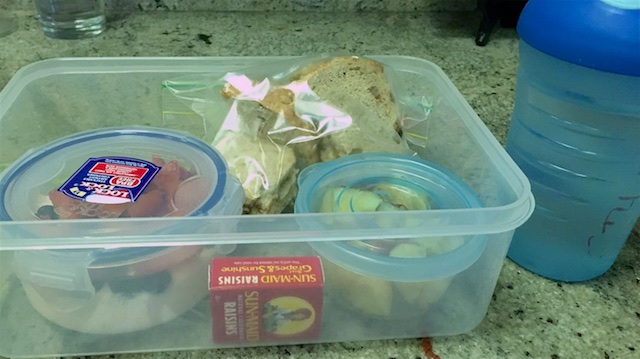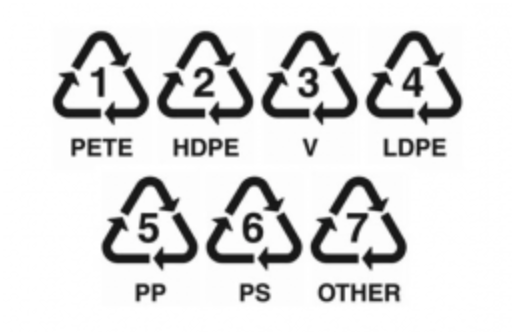
Question: How do I go plastic-free with a kids lunchbox?
As more information becomes public on the damages that plastics can cause, I find that I am becoming more discerning on reusing some types of plastics. David Suzuki Foundation has published a fact sheet informing us on which plastics are more suitable for reuse under the plastic by numbers table. Numbers 1, 3, 6 & 7 should not be reused and therefore if we can, avoid at the point of sale.
Hopefully what we have already in the home (including those plastic containers that grow legs and separate – magically – from their lids that not even a cooee will help…) fit within the reusable plastic numbers (2, 4 & 5). Even when we can’t find them when required.


Plastic #2 – HDPE (High Density Polyethylene)
- Plastic #2 is typically opaque and picked up by most curbside recycling programs. This plastic is one of the 3 plastics considered to be safe, and has a lower risk of leaching.
- It’s found mostly in milk jugs, household cleaner containers, juice bottles, shampoo bottles, cereal box liners, detergent bottles, motor oil bottles, yogurt tubs, and butter tubs.ilk jugs, detergent bottles, juice bottles, butter tubs, and toiletries bottles are made of this. It is usually opaque. This plastic is considered safe and has low risk of leaching.
- Plastic #2 is recycled into pens, recycling containers, picnic tables, lumber, benches, fencing, and detergent bottles, to name a few.
Plastic #4 – LDPE (Low Density Polyethylene)
- Low density polyethylene is most found in squeezable bottles, shopping bags, clothing, carpet, frozen food, bread bags, and some food wraps. Curbside recycling programs haven’t been known to pick up this plastic, but more are starting to accept it. Plastic #4 rests among the recycling symbols considered to be safe.
- This plastic is recycled into compost bins, paneling, trash can liners and cans, floor tiles, and shipping envelopes.
Plastic #5 – PP (Polypropylene)
- Increasingly becoming accepted by curbside recycle programs, plastic #5 is also one of the safer plastics to look for.
- It is typically found in yogurt containers, ketchup bottles, syrup bottles, and medicine bottles.
- Polypropylene is recycled into brooms, auto battery cases, bins, pallets, signal lights, ice scrapers, and bycycle racks.
So what to do now with any non reusable items – from the leading picture – that have been acquired unknowingly; and, how should we repurpose or dispose of these ‘single use’ avoidable types? e.g. I could keep sewing items in one; soap flakes for the shower in another; bottles of condiments etc in the larder; reuse the ziplock bag; compost the raisin package. As for the water bottle, it would sit at the back of the cupboard for the time being, especially not knowing if it contains BPA and I haven’t thought of a suitable reuse just yet.
Which leads us to replacing plastics, and what to replace with.
Recently I had a brief discussion about silicone and the point made to me was – in todays age, is it realistic to avoid all plastics and is silicone an acceptable alternative? I don’t think so, but I can be very choosy as to what plastics, that sit outside of my control that are allowed into the house. For example; medicines, sterilised products.
The following URL outlines some cons with silicone outlining why we should begin to be cautious about silicone.
Without turning this blog entry into a science review, I am keen on trialling the below food container products. Currently I reuse yoghurt containers for my cold lunches as they do seal quite well for liquids; stainless steel drink bottle with bamboo lid; ceramic and glass containers, bees wax wrap, and paper wrap.
In closing, I am just that bit more resolved to remove as much synthetic product as possible from from my day to day life.
This narrative is not done yet …
Source: http://www.lifewithoutplastic.com/store/is_silicone_a_plastic#.Vq2jhzb2N-U
source: http://naturalsociety.com/recycling-symbols-numbers-plastic-bottles-meaning/
source: http://www.healthychild.org/know-your-plastics/
source: http://www.davidsuzuki.org/publications/downloads/2010/plasticsbynumber.pdf
source: http://boomerangbags.org/shop/



